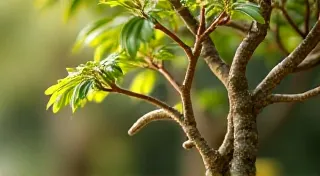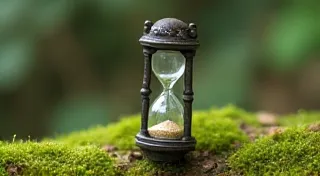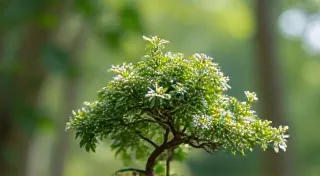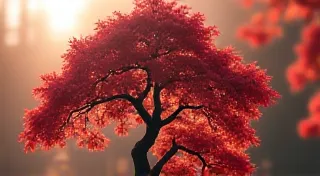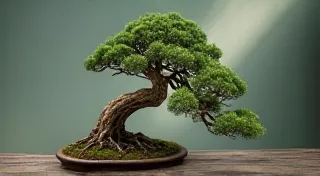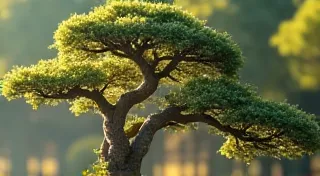Dwarf Pomegranate Bonsai: A Fruiting Delight
The vibrant colors and delicious fruit of a pomegranate tree are usually associated with sprawling bushes, but imagine enjoying all that in a miniature form! Growing a Dwarf Pomegranate bonsai is a rewarding experience, combining the art of bonsai with the joy of harvesting your own miniature fruit. This guide will provide you with the detailed information you need to successfully cultivate your own fruiting Dwarf Pomegranate bonsai.
Understanding the Dwarf Pomegranate (Punica granatum ‘Nana’)
The ‘Nana’ variety, often referred to as the Dwarf Pomegranate, is the ideal choice for bonsai due to its naturally smaller size and compact growth habit. It retains all the beauty and fruiting capability of the full-sized pomegranate tree, just in a manageable, bonsai-friendly package. Expect vibrant, glossy leaves and stunning flowers with showy yellow stamens.
Choosing Your Dwarf Pomegranate Bonsai
You can start with a pre-bonsai stock, a young grafted tree, or even a seedling. Starting with a pre-bonsai stock gives you a head start on shaping the tree, while a seedling allows for complete control over the initial development.

Essential Care: Location and Light
Dwarf Pomegranates are sun-loving plants. They require at least 6-8 hours of direct sunlight per day. A south-facing window is ideal for indoor cultivation, but supplementing with grow lights might be necessary, especially during winter months. Outdoor placement is best during warmer seasons, ensuring protection from harsh winds and frost.
Watering and Feeding
Water thoroughly when the topsoil feels dry to the touch. The frequency will depend on the pot size, climate, and time of year. Avoid overwatering, as this can lead to root rot. During the growing season (spring and summer), fertilize every two weeks with a balanced bonsai fertilizer diluted to half strength. Reduce or cease fertilization during the dormant season (fall and winter).
Pruning and Shaping Your Bonsai
Pruning is essential for maintaining the bonsai’s shape and encouraging branching. Pomegranate trees naturally produce a lot of growth, so regular pinching back of new shoots is necessary. Wiring can be used to gently guide branches into desired positions. Deciduous trees like pomegranate benefit from a more aggressive pruning during dormancy.
Flowering and Fruiting Care
To encourage flowering and fruiting, ensure your Dwarf Pomegranate receives ample sunlight and adequate water. A slightly drier condition can actually promote flowering. Pollination is usually successful with natural breezes, but hand-pollination can be done using a small brush. The fruits will ripen in late summer to early fall.

Repotting
Repot your Dwarf Pomegranate bonsai every 2-3 years, using a well-draining bonsai soil mix. The best time to repot is in the spring, just before new growth begins. Gently prune the roots during repotting to maintain a compact root system.
Common Problems and Solutions
- Leaf Drop: Can be caused by insufficient light, overwatering, or sudden changes in temperature.
- Pest Infestations: Aphids and spider mites can be a problem. Treat with insecticidal soap or neem oil.
- Lack of Fruiting: Ensure adequate sunlight and consider hand-pollination.

Conclusion
Growing a Dwarf Pomegranate bonsai is a truly rewarding journey. With consistent care and attention, you can enjoy the beauty of a miniature pomegranate tree and the satisfaction of harvesting your own delicious fruit. Enjoy the process and the delightful fruits of your labor!
